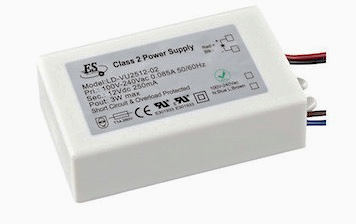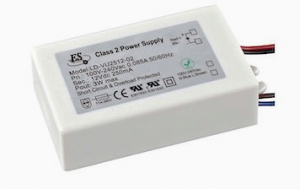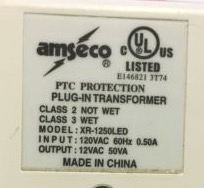Understanding Class 1, 2, and 3 Circuits: What Electricians Need to Know

By: Jerry Durham | Sep 07, 2018
NEC Article 725 is dedicated to specialized circuitry, different from standard power and lighting circuits. The limited power and voltage of these circuits is what makes them a separate and specialized wiring method.
This article will help distinguish the differences between these circuits.
The power supply connected to a Class 1, 2, or 3 circuit, for the most part, determines the class of that circuit. The power supply can be in the form of batteries as well as AC voltage(s) delivered through independent transformers or electronic power supplies that incorporate transformers into their design. 
A common example of Class 2 circuitry in your home is the doorbell wiring and associated transformer. The doorbell button on the front and rear of your home is a switch, opening and closing the connection between two low-voltage conductors, as you press the button. The low-voltage in this button and wiring configuration is generated by a Class 2, 120-Volt transformer, located somewhere within your home. 120 Volts enters the primary side of this small transformer, and then based on the number of copper coils on the secondary side, a voltage of somewhere between 16 – 24 Volts exits the transformer. This transformer will be identified as “Class 2”, and the input and output voltages will also be specified. The transformer’s output voltage is chosen based on the voltage requirements for your particular doorbell system.
Article 725 Part III in the NEC provides the voltage and power limitations for this Class 2 circuitry.
The NEC has established two categories for Class 1 circuits:
(1) Power-limited: Limiting the output-side of the circuit to 30 Volts and 1000 Volt-Amps (VA).
(2) Remote-control and signal circuits: Limited to 600 volts.
Class 1 power-limited circuits are equipped with overcurrent protection that will limit the amount of current on the circuit in the event of an overload, short, or ground fault condition.
One may think that a Class 1, 2, or 3 electrical circuit requires less care than conventional wiring, and perhaps has few Code requirements regarding its installation, but the NEC requirements for these limited-power classified circuits can be very similar to the requirements for installing standard power and lighting circuits, such as NEC 300.4(D) which requires these circuits, just as it does for NM Cable, to be installed so that the outside edge of the conductor is no closer than 1 ¼ inches from the nearest edge of the framing member. This requirement helps to protect these conductors, just as it protects other popular wiring methods, from fastener penetration during the installation of finishing materials, such as drywall.
Class 2 and Class 3 power-supply allowances, as well as limitations are found in NEC Chapter 9, Tables 11(A) and (B). Table (A) has been developed for AC current, while Table (B) is for DC current. 
Class 1, 2, and 3 of remote-control circuitry shall be classified as Class 1 only, if the interruption or failure of equipment on these conductors could impose a direct fire hazard or life hazard.
Knowing the power source will help you to identify the circuit classification, 1, 2, or 3, as well as the Code requirements regarding use and installation.


Trying to figure out if we can run cat 5 wire in conduit with 120v power. The power is constant to the shade motor which also plugs into rj 45 that is used for switching.
No, never run Ethernet parallel with electrical.
You can cross Romex with Cat circuits but never run parallel. believe may set up induction currents in lower voltage wiring. Use a different joist space. Suggest looking up examples of installs